передняя азия
древний египет
средиземноморье
древняя греция
эллинизм
древний рим
сев. причерноморье
древнее закавказье
древний иран
средняя азия
древняя индия
древний китай
НОВОСТИ ЭНЦИКЛОПЕДИЯ БИБЛИОТЕКА
Introduction
As an introduction to the history of carpet-making art a few words should be said about the beginning and further development of the weaving art in general.
In the process of the social development, labour of a Man became more conscious and purposeful. As soon as a Man needed a rope, he began to use the filamentous plants and then wool. So that the string or rope would be strengther and more reliable he began to twist and wind them. He twisted plants by hands and the woolen threads - by means of stone or a piece of wood.
Investigating the way the spider makes its web and studying its structure, a Man began to thread the twigs, canes and reeds one under another and by this simple way he made a mat, netting, roof [Fig. 1].

Fig. 1. Netting. Method of simple threading
In time a Man started to construct first primitive looms. On a flat area he fixed both ends of four twigs in the groung, each in the angle of a sguare, then he connected two of them by two short sticks. On these sticks he winded rear rows of the warp and threaded through it the weft. This is how a monocoloured rough-woven cloth appeared. This way of weaving [that is threading the weft through the warp] was the basic one in the cloth-and carpet-making art.
With the passage of time, development of labour as well as improvement of the instruments led to the fact that a Man began to use different raw materials for cloth making. A Man also differed which wool [camel, sheep or goat] is better for this or that cloth.
As a Man improved process of weaving, he tried to make his monocoloured cloth to be more colourful. He used horisontal threads of the weft and threads of the warp, which were different in colour. Having mastered the weaving of the horisontal stripes [Palas], a Man tried to weave the vertical lines and stripes [Jejim]. For this he took coloured threads in the warp and monocoloured threads in the weft.
The history of development of flat-woven and pile carpets may be devided into four main periods:
First period. The initial period of the carpet-making. Development of the method of matting, shawl, Palas, Jejim weaving. This is a simple threading, which is characterised by continuous threading of the weft through the threads of the warp.
Second period. It is considered to be the beginning of the development of the carpet-making art, from the technical and decorative points of view. In this period the method permitted to make primitive ornament on the carpet.
Third period. Development of the method of Sheddle, Zili, Verni and Sumakh weaving. The period, when winding and complex winding were widely spread. Method of complex winding permitted to complicate the carpet ornament, to use ornamental elements of different size and forms.
Fourth period. Development of pile weaving by means of knots making. This alowed to use different ornamental elements and create complex compositions.
When metal instruments [scissors, in particular] appeared, the production of pile carpets was activated. Method of knot-weaving was developed.
As it is known from manuscripts and oral folklore the pile carpets were called in the Middle Ages as "Migrazi" or "Gaichi", which is translated as "scissors", because the knots on the carpets were cutted by scissors.
A remarcable Azerbaijanian poet of the XI-th century Gatran Tebrizi, glorifying Selid-al-Vuzara Amid al-mulk Abu Nasra in his verses, wrote about Migrazi:

that means: "As a threadbare Palas or felting are nothing for others, a Migrazi carpet is nothing for you".
The fourth period of development of carpet-making art relates to immemorial times. This is justified by the fact that by the archeological excavations in Altai mountains in Puzyryk hill a pile carpet Pirabedil was found. The carpet was believed to date from the VI-V-th centuries В. С.
Arabian historian Mukhammed Jafar Tabari [IX-X-th centuries], famous poet and historian of Iran Abulkasim Firdousi [X-th century] and many other authors of the Near East considered the legend rulers of Iran Keyumarsa, Kushanga, Takhmuresa and Jamshid to be the initiators of the carpet-making art and connected the appearing of the carpet-making with these names. Firdousi even affirmed that Jamshid was a founder of the method of weaving and twisting and taught others to do this.

That means: He taught them to weave and twist threads. To wind the weft into the warp.
In the X- IX-th centuries В. С on the territory of the ancient Azerbaijan Manna state was established. Up to the middle of the VHI-th century В. С this state overrode Azerbaijan itself. At the beginning of the I-st thousand В. С agriculture and sheepbreeding were highly developed in Manna. They created favorable conditions for manufacture of the roudh-woven cloths and carpets. Delicate-woven Kilims and carpets made in this area are considered to be valuable displays in all museums of the world.
Manna, which was on a high level of its economic and cultural development, attracted attention of the neighbours-Assyrians, who tried to override this state. They made raids on Manna and nearby areas, forced the skilful masters to leave the state. In the process of fight against the Assyrian aggressors in the 70-th of the VHI-th century В. С an independent Midian state was established from the Midian tribes, which lived to the east and south-east of Manna. The state established in the South Azerbaijan, stopped its existance and joined to Midiya which became the most powerful state of the ancient East. This state existed for a short period. When Akhmenidian state appeared [approximately in 550] Midiya stopped its existance as well. The South Azerbaijan was overrode by Akhmenidians.
In the first quarter of the Hl-d century Sasanid state appeared. Having overridden Iran, Sasanidians began to conquer the Middle Asia, Athropaten, Syria, northen part of Azerbaijan- Albania.
In the period of Sasanidian rule the flat-woven carpets were manufactured in Azerbaijan. These carpets were decorated by gems. They were described by Azerbaijanian poet of the ХИ-th century Nizami Gyanjavi in his poem "Khosrov and Shirin".

That means: "Would you order to spread the carpets decorated by gems. Bring a gold arm-chair on six legs.
As it is known in the 30-th of the VIII-th century after a 90-year fight, the Arabian conquerers overrode Azerbaijan. Arabians forced the Islamic religon in Azerbaijan. The Azerbaijanians worshipped fire and idols before this. The Arabian carpet-making art was influenced by Azerbaijanian one and made a new step in its development. A famous in Caucasus composition "Shirvan aral" justifies the Azerbaijanian influence on the Arabian carpet-making art.
The investigations showed that the flat-woven carpets [such as Palas, Kilim, Zili, Verni, Sumakh, Makhfura and others] were more popular in Azerbaijan than in other countries of the Near and Middle East. Art quality of the Azerbaijanian carpets was extremely higher as well. It is justified by the fact that today delicate-woven [by Zili method] carpets, chuls, matrasses, Khurjuns, chuvals, made by skilful Azerbaijanian masters are valuable displays in many famous museums of the world.
In the ХII-th century trade and craft began to develop, towns became larger, all these caused the upsurge of Azerbaijanian economy. In that time two states existed at Azerbaijanian territory. In the North it was Shirvanshah dynasty, and in the South-Eldegezid dynasty.
It is well known that the countries, conquered by Arabians, used Arabian language and Kyufi alphabet. As the shape of the letters looked like broken lines on Azerbaijanian carpet ornament, these letters were initially used for Namazlyk carpets ornament and in the XIV-XV-th centuries they were used on all North-East Azerbaijanian carpets as border ornament.
As it is known in the XH-th century a huge territory of Asia, from China to the Mediterranean as well as some countries of East Europe, were conquered by Mongolian nomads-feudals. The Mongolian yoke destroyed economy and culture of the conquered countries including Azerbaijan.
South Azerbaijan, Tebriz in particular, was famous for flat - woven carpets [Palas, Kilim and others] manufacturing. Silk Palases, pile and flatwoven carpets, made of silk with gems and silver and gold threads were widely known. Such carpets, which have been created by skilful masters of Azerbaijan as centuries passed, were plundered by Sasanids, Arabian conquerers and then by Mongolian aggressors. In the ХIII-th century due to the fact that in the period of Mongolian rule people of Azerbaijan lived poorly [especially in villages], the Palases were made not of silk or wool but of cotton dyed by "mazy" - a black dye.
In the same period of time the carpets of high quality, either pile or flat-woven, were manufactured. They were made of wool [sheep or camel] and silk. But these carpets were used not only by those, who made them. They were made as required by Mongolian aggressors, who didn't pay to the carpet-makers for their work.
Such forced orders were mostly fulfiled in the carpet areas, such as Mugan and Kabystan.
As hundred thousands Turkish-Mongolian families migrated from the Middle Asia to Azerbaijan, some decorative elements of the Chinese-Ulgurian painting penetrated into different branches of our art. However this fact didn't influence on the decorative art of Azerbaijan, which was still independent and ornamental. Moreover the elements of Ulgarian culture were assimilated with local style and resulted in composition "Ovchululg" [Hunting], "Bulut" [Cloud] [Fig. 359].
Beginning from the second part of the XV-th century due to the development of painting the significant changes in decorative design of the carpets [pile carpets, in particular] occured. Ornament of the carpets may be devided into two groups: a] the ornament, consisting of the broken lines; b] the ornament, consisting of the curve lines. In this period the compositions "Shebekebendlik", "Lachakturunj", "Afshan", "Islimibendlik", "Khatai" and "Bende-Rumi" were improved.
Many famous painters of the world used in their works an Azerbaijanian carpet as a decorative element. In this way a Holland painter Gans Memling [1433-1494] used in his picture "Maria with a baby" [Fig. 23] "Mugan" carpet, Shirvan group of carpets, Azerbaijan. The image of the "Gyanja-Kazakh" carpet may be seen in the picture of the famous German painter of Renaissance G. Golbein "Ambassadors" [Fig. 24].
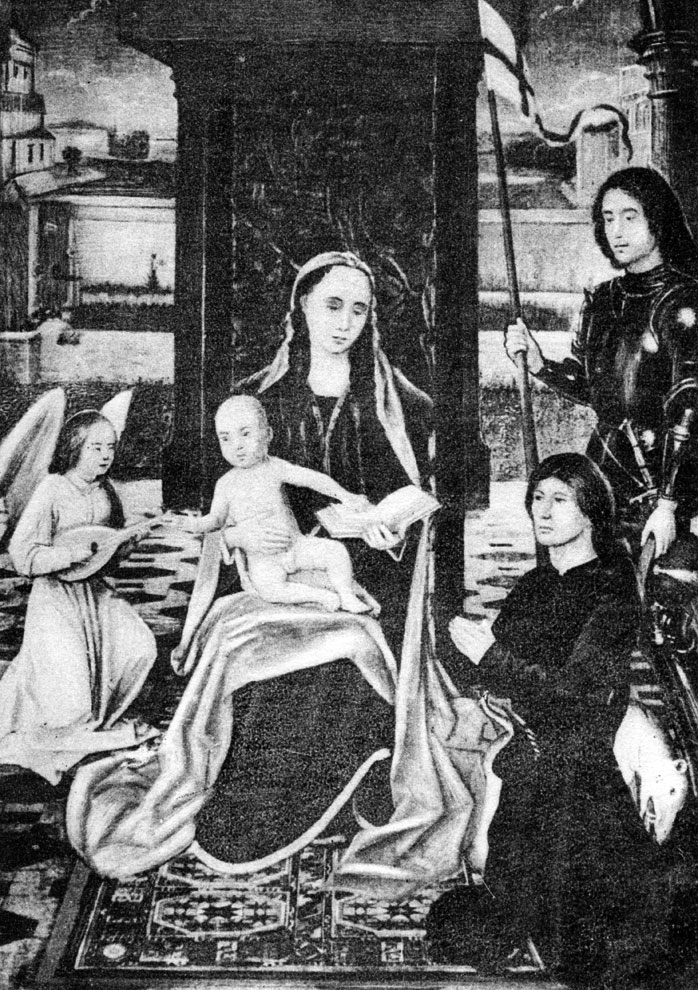
Fig. 23. Gans Memling (1433 - 1494) 'Maria with a baby'

Fig. 24. Gans Golbein - the younger (1497-1543), 'Ambassadors' (1533)
These and many other examples justify that in the last centuries the Azerbaijanian carpets were popular in many countries of the world.
In the past the technological process of the carpet-making has been developed from simple to complex, these created conditions for evolution of their decorative peculiarities. Beginning from the XV-th century decorative problems influenced on the technological processes. The improved process of the carpet-making in the first half of the XVI-th century was on a very high level either from technical or decorative point of view. Delicate caprets of wool, silk and carpets, woven of threads of non-ferrous metal, are displayed in many museums of the world, being the original works of art. [Fig. 27-29].
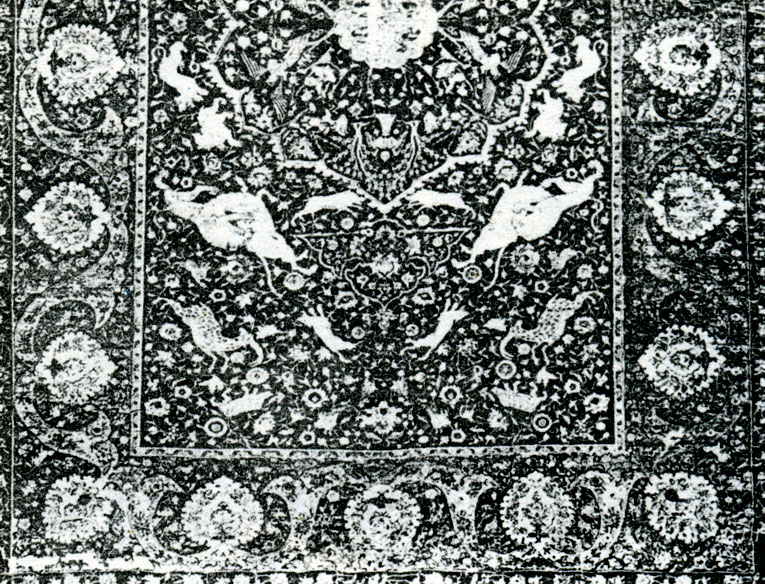
Fig. 27. 'Tebriz' carpet. Central fieldimages of people and animals. Border - 'Khatai' type
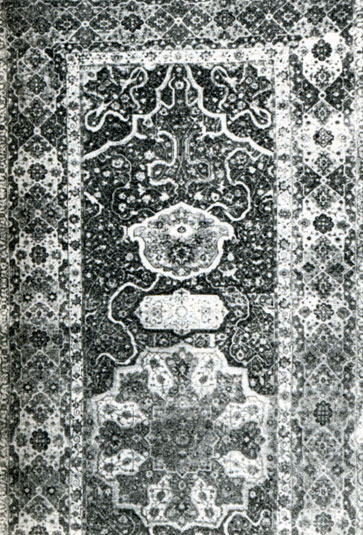
Fig. 28. Khali. Eearly XVI century. Tebriz of Ardebill
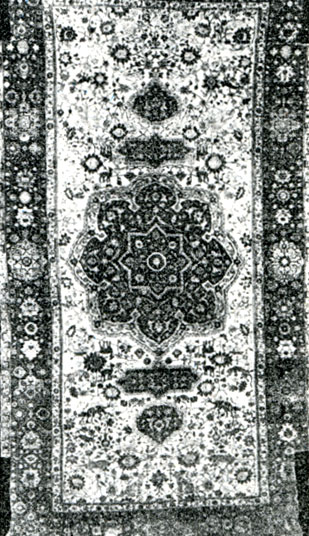
Fig. 29. Khali. Central field - scene of hunting. Border - 'Ketebe' type. First half of the XVI century
Beginning from the second quarter of the XVI-th century a new period of prosperity began in Azerbaijanian carpet-making art. In this time large decorative Khalies were made and used not only in palaces for rulers but also for mausoleims, mosques and pilgrimage places. The famous Khali "Sheikh Safi" [Fig. 360], Victoria and Albert Museum, London, as well as the large Khali with the image of animals, Metropoliten Museum, New York, were made in that period for Ardebilian mosque and were testamented to it.
In the XVI-th century the reversible carpets appeared in Azerbaijan. They were called "dorule" in Persian and made by new method. The technological process of these carpets making was a more complicated one. The face and back sides of these carpets were of different colours and decorated by different compositions. The reversible carpets were used as curtains for doors of the palaces and temples.
Azerbaijan throughout many centuries had cultural relations with nearby countries, exchanged with them the work of arts. As a result of such continuous relations, culture and art of Azerbaijan were enriched by elements of "another" art, which assimilated and became Azerbaijanian.
The Azerbaijanian carpets [flat-woven carpets and carpet wares, in particular], which count 90% of the carpets, joined by the name "Caucasus", influenced not only on the carpet art of Caucasus but also Turkey and Iran both from technological and decorative points of view.
In the conditions of continuous wars, which were mainly on the territory of Azerbaijan, strengthening of economic relations with Russia played an important role for further development of art and trade. In this period Russia earned immernse prestige in the world.
Russia was also interested in economical and political relations with Caucasus, including Azerbaijan. In Moscow and many other Russian towns the Azerbaijanian merchants lived and traded. Export of the Azerbaijanian silk in Russia was important for development of Russian manufacture in the second half of the XVIII-th century and even later.
Beginning from the XV-th century, in the second half of the XVI-th century, in particular, the carpet compositions such as Afshan, Lachakturunj, Khatai, Gyelbendlik and some other, developed in Azerbaijan, began to spread in the carpet-making areas of the local art, and the carpet-makers began to use the curve lines, characteristic for these areas and centers, so that the carpets became popular and known with another names.
The carpet-makers from the South Azerbaijan were in tight relations with their colleges from the North Azerbaiian, both of them spoke one and the same language. Influencing on each other in the field of art they mutually enriched. They continuously exchanged by flat-woven and pile carpets. The flat-woven carpets, which were differently made and had different compositions, were intensively developed in the North and influenced on the carpet-making of the South Azerbaijan. In the same time the pile carpets, the manufacture of which was on a very high level, either from technical or decorative points of view, influenced on the carpet-making art of the North Azerbaijan.
Such mutual influence is observed in the art of Iranian, Afganian, Azerbaijanian, Turkian, Turkish and Middle Asian carpet-makers.
In the last years of the XVII-th century Azerbaijan began to separate into small feudal khanates. In the second half of the XVIII-th century the territory of the counry consisted of the separate khanates, which were politically and economically independent. This was a serious trouble on the way of cultural and economical developnent of the courtry. Each khanate has its individual carpetmaking shop. The carpets of a high quality were produced there. Some of them are displayed in different museums of Turkey [Fig. 35-39].
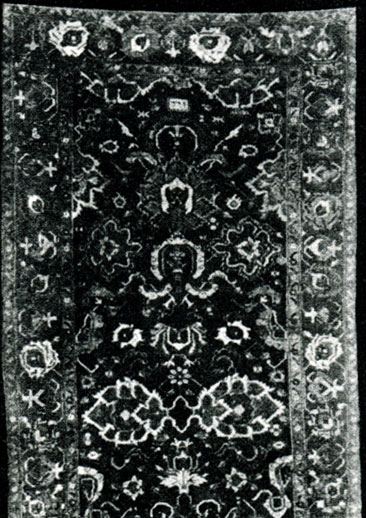
Fig. 35. 'Karabakh' carpet. Early XVIII century (1133-according to Khijri chronicle; 1720)

Fig. 36. 'Karabakh' carpet. XVIII century. Istambul, Turk ve Islam Eserleri Muzesi. Inv. N 283

Fig. 37. 'Shirvan' carpet. XVIII century. Ankara. Museum of Ethnography

Fig. 38. 'Shirvan' carpet. XVIII century. Konya. Izzet Koyun ogly Museum

Fig. 39. 'Kuba' carpet. XVIII century. Kortya. Izzet Koyun ogly Museum
In 1828 the Turkmenchai peace treaty was concluded between Russia and Iran. According to this treaty the northen part of Azerbaijan joined to Russia and the southen part-left in Iran. Joining of the North Azerbaijan to Russia was a progressive event in the history of Azerbaijanian people. In the XIX-th century Azerbaijan progressively stands in the way of economic development, joins the Russian markets and through Russia- joins to the international commerce. In all regions of Azerbaijan the carpets and carpet ware were manufactured. The carpets, made in Shirvan and Kuba areas, were sold in Baku, Kazakh and Gyanja carpets- in Tbilisi, and Karabakh - in Tebriz or Istambul. The Kuba carpets were bought mainly by local jerns, and the Karabakh, Gyanja, Salyanian and Muganian carpets - by Armenian secondhand dealers. The carpet-makers had to sell their carpets to speculators for a small cost. The speculators gave to the carpets, which they bought, the invented names. In the foreign literature these names are met still in our time.
As the mode of the people life changed, new tests and demands appeared, and this in its turn changed form and content of the folk-craft wares. New carpet compositions appear: in Shusha - " Bakhchada gyullyar" [Flowers in the garden], "Sakhsyda gyullyar" [Flowers in the earthenware pot], "Bulut" [Clouds], "Atlyitly" [The rider with a dog] [Fig. 41], "Mashyn" [Machine]; in Shemakha- "Khoruz nishan" [Fig. 42], and in Kuba - "Khyrdagyul chichi".
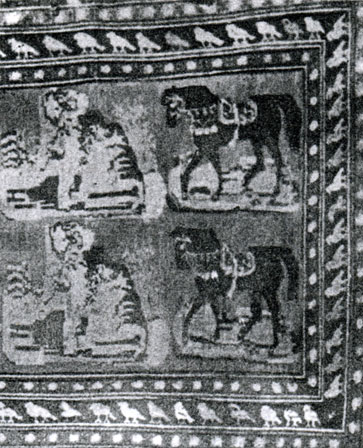
Fig. 41. 'Atly-Itli' carpet. Shusha group. Second half of the XIX century

Fig. 42. 'Khoruz-nishan' carpet. Shirvan group. Early XX century
These carpets were exported in Iran and Turkey. In Lemberan, Agja-bedi, Shemakha and Nakhichevan Jejims of simple and complex weaving were intensively manufactured [Table 90-2]. In all carpet-making areas of Azerbaijan Kilims and Palases of large size were made. The Kilims, made in Shirvan area and in Padara, in particular, were exported in Russia, Iran, Istambul.
In Apsheron, in Kobu and Khojagasanli villages in particular, the ornamental delicate-woven Palases were made, they were called as "Chiyi palas" [Table 40].
Yet in ancient ages the Azerbaijanian carpet-makers produced the dyes, which they used in carpet-making, from plants [leaves, flowers and roots]. But at the end of the XIX-th century and at the beginning of the XX-th century they began to dye wool by chemical dyes, imported from Germany. The natural dyes were progressively supplanted by the chemical ones.
The carpet-making is the most complicated field of decorative-applied arts.
Now the most carpets of the world are manufactured in large shops, or factories. Khali and other carpets made in such a factory is not a result of personal creative and technical work, but is a result of activity of group of masters.
In the past the carpets were made individually by a skilful master carpet-maker. The master carpet-maker cutted the wool of his own sheep, combed it, spined the wool, made threads, dyed them as he wanted by the natural dyes and then made from these threads the warp on his loom.
The skill of the master was also defined by his ability to combine the colours and to read the drawings. Such carpet was made not for selling but as a present or dowry. If the carpet was to be sold, the carpet-maker did this through the brokers. The broker was not an expert in the carpet-making art, but a specialist- in trade business, he possessed the carpet and the-work of art was passed from hands to hands. Name, given to the carpet by its creator, was forgotten.
It is interesting that the broker changed the name of the carpet and this favoured the growth of the cost. Not only the name of the carpet-maker, but also the place, where the carpet was made, were forgotten.
Owing to this, the expert of the carpet-making art may be a man, who has the deep knowledge of the technological peculiarities of the carpet making art, has the sense of colorite, understands the ornamental structure and the composition of the carpet, knows the alphabet of the details and elements of the carpet, analyses the "morphology and syntax", rythm and harmony of the knots. Moreover the scientist-expert of the carpet-making art must know the historical conditions, in which the given carpet was made, he should also know the geographic and ethnographic peculiarities of the people, created this work of art.
|
ПОИСК:
|
При копировании материалов проекта обязательно ставить ссылку:
http://artyx.ru/ 'ARTYX.RU: История искусств'
